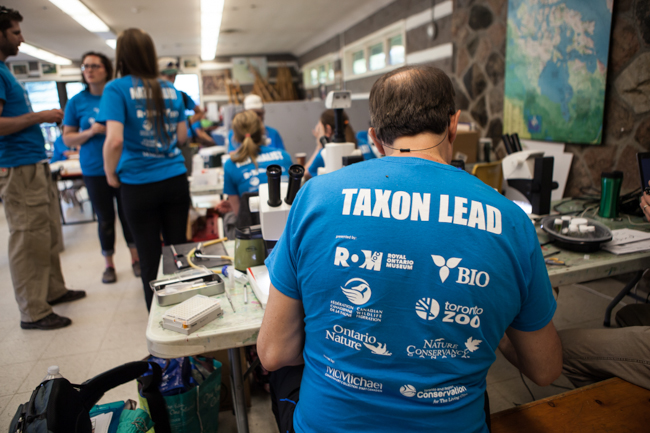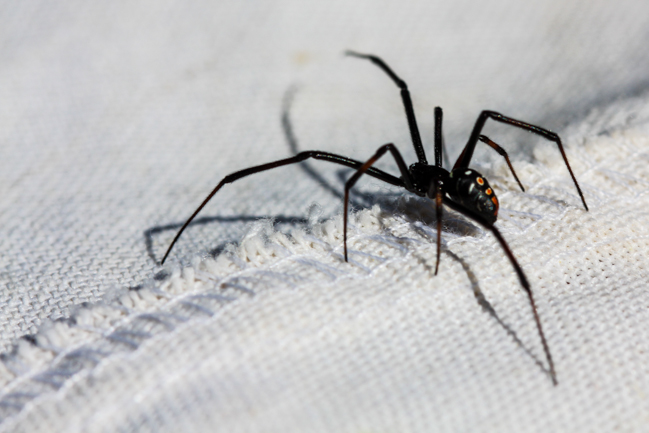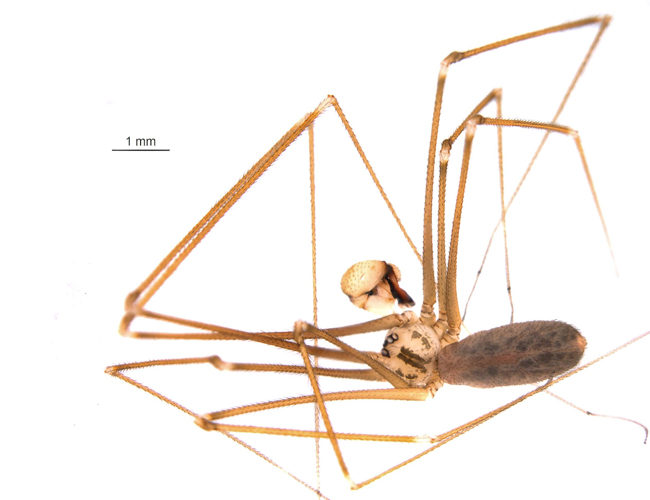Ontario BioBlitz Brings Bad News for Arachnophobes

By Guest Blogger and 2014 Ontario Bioblitz Arachnid Taxon team leader Dr. Gergin Blagoev, Research Associate at the Biodiversity Institute of Ontario (BIO).
I have to admit, as I pulled my bright blue “Ontario BioBlitz” t-shirt over my head on the morning of the event, I wasn’t feeling very optimistic about our chances for finding many species, or at least, for me as an arachnologist, interesting spider species. I thought that the Humber River Watershed would be too negatively impacted by the urbanization that surrounds it; maybe we’d see fifty-or-so common species, then call it a Blitz and go home. To my surprise and excitement, I was wrong!

I have just finished identifying and cataloguing the majority of the arachnid species we found at this year’s Ontario BioBlitz, and can say that we found at least 108 species of spiders, and possibly even 5-10 more species after some juveniles are identified at the Biodiversity Institute of Ontario using DNA barcoding. Also for the first time during the BioBlitz, we added eight new spiders to our Barcode of Life Data Systems (BOLD) database. This is a free, publically-available, online reference library of all available DNA barcodes. Plus, not only did we find double the number of species I expected, and collect new species DNA for the database, we also found a couple especially interesting spiders:

The first is Latrodectus variolus, known commonly as the Northern black widow spider. Yes, they are indeed venomous like their famous southern widow cousins, Latrodectus mactans. These spiders primarily use their venom to immobilize their insect prey, and as self defense. They are not commonly observed in Ontario, so we were excited to find one. People frequently report finding Northern Black Widows, but they are often misidentifications. This spider is easily confused with so-called false widow species of the genus Steatoda, which are absolutely harmless to humans.

The next species I’ll mention is a very big find for us, as it is the first time this species has been recorded in Canada. It is Pholcus opilionoides, a species of “cellar spider” that is ordinarily found only in Europe. For us, this means we have discovered a species that may be a new species in Canada (North America respectively), or a potential invasive species. The addition of new invasive spiders could be a good thing for us though, because they are the loyal friends of humans against many of the insect pests and disease vectors that they feed on.

Finding these and the many other pleasant surprises from the spider world in the Humber watershed is a good indicator of the overall biodiversity there. We have also been able to show that using more intensive identification methods, especially DNA barcoding, can tell us even more about species and groups of species (like spiders) that are notorious for being difficult to identify in the field. It also proves that events like the Ontario BioBlitz can provide opportunities to discover and document real, tangible, and scientific inventories of regional biodiversity in Canada.
I would like to thank the organizers of the event who ensured that everything went so smoothly for all participants, and provided us with perfect conditions to work. This year’s Ontario BioBlitz was a huge success and a whole lot of fun, and I know that I am definitely looking forward to next year’s blitz and the wonderful species we might find in the Don River Watershed.
The 2014 Ontario Bioblitz was the third annual Ontario Bioblitz, which took place from noon, May 24th until noon, May 25th in the Humber River watershed. What is a Bioblitz? It's a 24-hour intensive survey of all living organisms within a given area! The 2014 event saw the Royal Ontario Museum partner with seven other major organizations to coordinate roughly 500 volunteers in an effort to catalogue the biodiversity of the Humber River area. While the event itself is over, the identification of specimens continues; you can learn more about the rising species count from this year's Bioblitz here.
